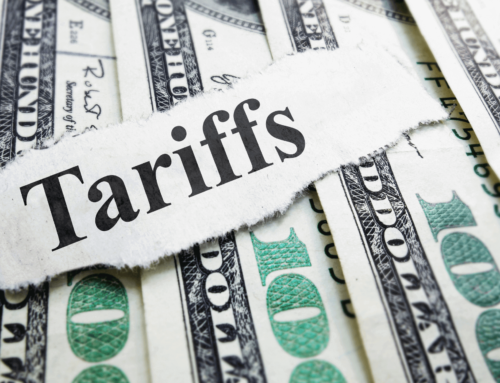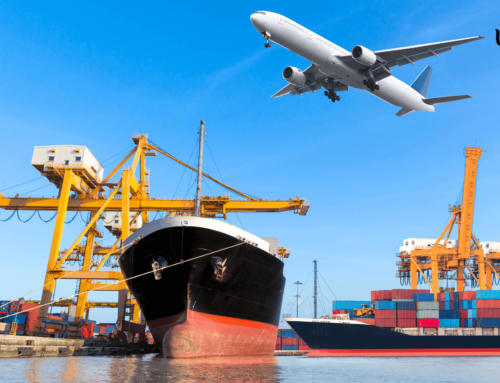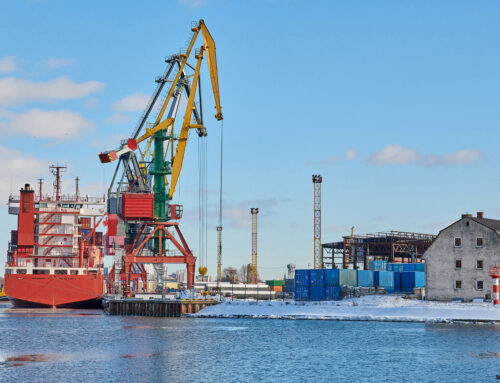Remcoda Express was born out of a supply chain crisis and its successes are just another example of how shippers across industries are revamping their logistics strategies.
The company is the freight and logistics arm of IBrands Global, which has a portfolio of brands in the apparel, food service and health and wellness spaces. That includes bebe, Alloy Apparel and Pam & Gela on the fashion side. It also imports safety equipment for its food service division.
IBrands launched Remcoda Express earlier this year and, while it’s largely focused on IBrands’ food services business, it’s a study in how shippers are exercising greater control over freight and logistics coming out of the worst of the pandemic. Another example of this is American Eagle Outfitters, which acquired Quiet Logistics, now Quiet Platforms, and AirTerra last year.
In Remcoda’s case, it has a specific focus on removing the additional costs and time associated with freight forwarders in the first mile.
The decision to launch Remcoda stemmed from the demand the food and medical service businesses were seeing during the height of the pandemic. Obtaining raw materials and moving cargo to the U.S. became increasingly difficult.
“There were two main issues here. There was delivery and there was cost,” IBrands president and coo Cole Garson told Sourcing Journal of what drove the decision to launch Remcoda Express. “From an execution standpoint just getting goods here, you had international ports shut down. You had a lot of goods that people needed. We became a demand-focused economy versus a service-oriented economy. So, it was just really hard to get goods here.”
Product, in some cases, became tied up at ports overseas, or the cost to remove goods from the factory was higher. The layers of complexity in moving product are dizzying, requiring overseas agents, freight forwarders to put product on a ship, customs brokers to get it across the waters and then drayage companies to move cargo off the port terminals.
“That’s like eight levels of mark-up there,” Garson said. “So, if we can bring it all in-house, our end product is going to be cheaper.”

“The technology can’t pick your container up from the port. We found a way to do that…” said IBrands president and coo Cole Garson.
Additionally, Remcoda Express owns its own drayage assets, of which there are nearly 200, and dots its presence along the perimeter of the country as opposed to having centralized warehousing. Remcoda currently has a network of a dozen warehouses that Garson said is the sweet spot for now.
“Why’s that [perimeter] important? Because we can pull things off the port and into our warehouses super quick. Drayage is the hardest piece of logistics right now—getting truckers to drive all the way to the middle of the country and then return containers,” Garson said.
While plenty of attention the past couple years has focused on supply chain technology and the myriad of start-ups receiving funding to bolster companies’ goods movement networks, Garson pointed out tech can’t solve everything when asked if the company had first considered tech solutions prior to launching Remcoda Express.
“We’ve looked into different software-based, digital-based companies, but we find them more as an accommodative tool versus the answer,” he said. “So, in other words, there are companies that we’ve looked into that can track your shipments really well or optimize which carrier to go with, whatever it may be, but that only makes it easier. It’s a service; it’s not necessarily the answer. We didn’t find those systems sufficient. We felt like the infrastructure needed to be rejiggered…. The technology can’t pick your container up from the port. We found a way to do that and, not to get too nerdy on this, but chassis and container detention is a major problem today.”
Drayage is a component of the supply chain that’s not as easily understood as more consumer-facing touchpoints, such as the last mile and all the head-turning gadgetry of drone or robot delivery, but it’s critical. It involves the movement of goods from the ports, impacting shipper costs, time and the detention and demurrage fees levied when carrier equipment used for drayage transport is checked out for longer than the time allotted.
Detention is the fee charged for using equipment outside of the port terminals past the return deadline. Demurrage would be use of equipment past the return deadline while still in the terminal, such as product in containers not picked up in a timely manner.
These costs can really add up.
Container xChange’s “Demurrage & Detention Benchmark 2022” report notes that global average D&D charges levied by container lines on customers two weeks after cargo was discharged from the vessel increased 38 percent for standard-sized containers to $868 in 2021 from $586 in 2020.
“It’s really hard to convince a drayage operator to drive all the way to Milwaukee and then they’ve got to come all the way back,” Garson said of the challenge in drayage. “Sure, they might charge extra, but they’re missing jobs. It’s not a desirable route, so you’re going to struggle to get somebody to want to do that. That time that it adds ultimately puts you into detention. They don’t rush on the way back because it’s your money, not theirs. That’s why we focused on drayage at Remcoda. That’s our specialty.”
The coo said the company was born out of the supply chain crisis, seeing opportunity where heritage providers were unwilling to change and act more nimbly. Ultimately, Remcoda Express is expected to shave off about 30 percent of the company’s shipping costs.
As a result of the division’s successes, Remcoda Express doesn’t just service IBrands portfolio companies. It offers its services to anyone, growing to a headcount now of about 40 employees as it continues to attract outside interest.
Added Garson: “In the short time that we’ve been operational, it’s been the highest demand entity that we have here in our portfolio.”







